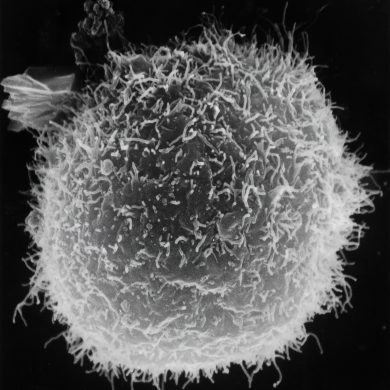By Oliver Engel | Blogger | SQ Online (2013-2014)
So you’ve heard of 3D printing, where various materials can be “printed” into static shapes based on a virtual model. But what about 4D printing?
4D-printed objects are those that are printed using 3D printing technology, but are made of materials that allow the object to respond to environmental stimuli–without external programming. Essentially, these objects have an intrinsic “programming” that allows them to react in predictable ways to certain environments, such as a strand that folds itself into a cube when submerged in water. 4D printing is an advancement sparked by engineering and design elements in attempts to increase efficiency in structural engineering, architecture, and design. This TED talk by MIT researcher Skylar Tibbits explains the macroscopic implications of 4D printing (as a side note, “4D” is somewhat of a misnomer, but is nonetheless a useful term in such a discussion).
However, the concept of 4D printing is inspiring much more than architecture and engineering, and has generated significant interest in the biology community. Harvard’s Wyss Institute is already applying the concept of 4D printing to create cancer-fighting NANOROBOTS! Yes, you read correctly: “robots” that cannot even be seen under a microscope are some of the newest contenders in the fight against cancer. Just as certain materials can be formed to have a “programmable” nature, so can pieces of DNA. Cut along certain regions, segments of DNA can be combined to form a “short hexagonal tube…that can open along [its] length like a clamshell… essentially turning it into a molecular ‘delivery truck’ that can transport medication to specific cells in the body” (Harvard Wyss Institute). The video below, from the Wyss Institute, explains how these nanorobots work: by responding to environmental stimuli just as a 4D-printed object would.
Researchers explaining the functions and implications of DNA nanorobots. Source: Wyss InstituteSuch integration of biological material, structural engineering, and design is opening up new possibilities for individualized medicine, especially in treating cancer. The molecular mechanisms within the DNA nanorobots allow for the accurate delivery of medicine or molecular instructions for apoptosis to cancerous cells, leaving healthy cells virtually unscathed. To state it bluntly, DNA nanorobots are like precision rifles, while current cancer treatments such as chemotherapy are like shotguns.
Sound too good to be true? Not quite. Although preliminary tests have been limited to in vitro, Harvard researchers are confident about the application of this innovation in complete living systems. Of course, a whole host of other factors must be first taken into account, such as ensuring that the DNA nanorobots are not attacked by the host’s immune system. Only time will tell if these wondrous science fiction-esque creations will eventually phase out more invasive treatments and help in the fight against cancer.
You might be wondering about the implications of the growing integration of biology, engineering, and design. Just about every aspect of biology revolves around design–from the Fibonacci sequences that occur in plants to the double helix structure of DNA. Evolution has brought about biological structures that we can learn from and apply elsewhere in our lives, and Harvard’s Wyss Institute revolves around the application and development “biologically inspired engineering.” Understanding such a connection is crucial to the new age of biology in which interdisciplinary research is paramount. So stop putting off enrolling in that visual arts course for your GEs! And even if you’re not planning on entering one of the expanding interdisciplinary fields within biology, understanding that biology has far-reaching implications and connections will allow you to form a greater appreciation for subjects like fine arts and architecture and their intertwinement with hard sciences.
Sources / Additional Reading
- Guardian article about the crossovers between 4D printing and DNA nanorobots
- Harvard University press release on the functions and implications of DNA nanorobots
- Harvard University magazine explanation of the biological mechanisms behind DNA nanorobots
- Wyss Institute video focusing on conceptual functions and individualized medicine
- TED talk on the emergence and implications of 4D printing in design and architecture
